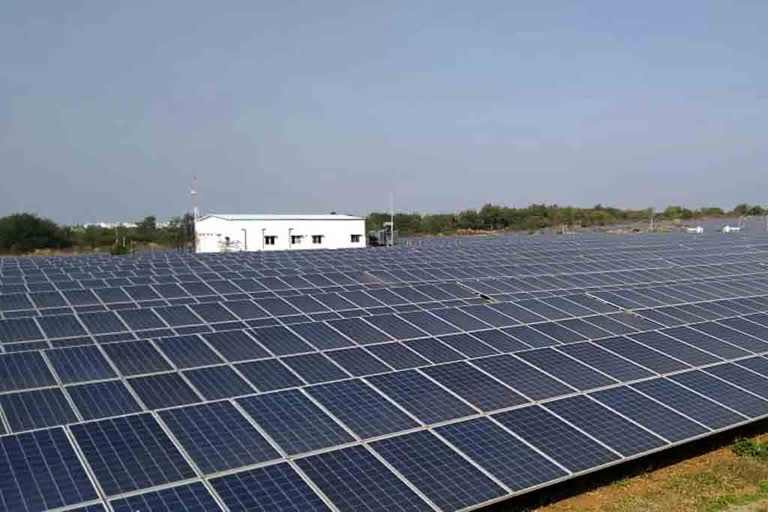Hyderabad: What started as an eco-friendly alternative for the power produced in pollution-emitting thermal power plants, the solar power has come a long way and now become the most economical source of power in India’s energy basket.
Thanks to rapid technological advancements, proactive government policies, and private sector participation, the solar power industry received a major boost in the last one decade.
“First major push for solar energy came in the form of Jawaharlal Nehru National Solar Mission (JNNSM) launched by the erstwhile UPA Government in 2010. The Scheme had a target of achieving 20 GW (1 GW = 1,000 MW) by 2022.
However, the NDA Government that came into power in 2014 raised the bar by setting a target of 100 GW in the same period," said Keshav Chaturvedi, an expert on energy.
“As a result of this ambitious target accompanied by the constant government support, our installed capacity has gone up from 2.5 GW to 34 GW in the last ten years,” he added.
Technology is the key
The capability of a photovoltaic cell or solar cell, which converts solar energy into electrical energy, is central to the solar energy generation system.
Starting from the required land to the financial resources needed to set up a solar power plant is dependent on the conversion efficiency of the solar cell that sits quietly on a solar panel.
The best thing that happened for the solar power sector in recent times is the considerable improvement in the conversion efficiency of a solar cell.
“The conversion rate of solar cells has gone up from 20 per cent to 30 per cent. As a result, the cost of setting up a solar power plant has come down to Rs 5 to 6 crore per MW," said Somashekhar Mulugu, a senior journalist who covered energy-related aspects for a long time.
“In other words, a 100 MW solar power plant that used to produce only 20 MW previously, now produces 30 MW on the back of improved efficiency,” explained Somashekhar.
Besides addressing supply-side issues, the technological advancements helped to broad base the applications, which in turn attracted higher investments into this sector.
“The uptick in solar energy consumption is a result of broad-based applications. Unlike the restricted use of solar energy in fewer places, now we see solar energy is in use in a lot of places like lighting, heating, mobility, agriculture, etc," said Somashekar.
However, technical challenges still remain, especially those related to storage and grid connectivity.
“When we talk of solar energy, one important aspect is the sustainability of the power grid to which the electricity produced by solar plants is fed. Unlike a thermal power plant that can produce a constant output throughout the day, the output from a solar power plant keeps fluctuating as the sunshine keeps varying. Due to these fluctuations, the grid stability is at the stake,” said Pratim Ranjan Bose, an energy expert.
No doubt, the recent inclusion of Advance Chemistry Cell (ACC) Battery in the Production Linked Incentive (PLI) scheme of the Aatmanirbhar Bharat Abhiyan will boost the much needed domestic battery production and solve this problem to an extent, setting up of smart grids that can withstand fluctuations in the energy supply would go a long way for the long term development, added Bose.
Are low tariffs sustainable?
Though the latest solar auctions that attracted bids as low as Rs 1.99/unit seems to be beneficial for the end consumers in the short term, experts are apprehensive of the damage these can cause to the larger ecosystem.
"In the last two decades, the solar power tariff has come down from around Rs 24/unit to around Rs 2/unit. While the gradual decline in production costs with the advancement in technologies is a good sign, I see a problem in the recent aggressive bidding as it flushes out good producers from the scene and the market, will be left with only ineffective players" said Pratim Ranjan Bose.
"When a producer promises power at a low tariff, there is little headroom left and, ultimately, it will lead to the collapse of the business. We need to realise is the fact that - nothing valuable comes cheap," he concluded.
Also Read: Sebi revokes mkt ban on 7 entities in front running case



